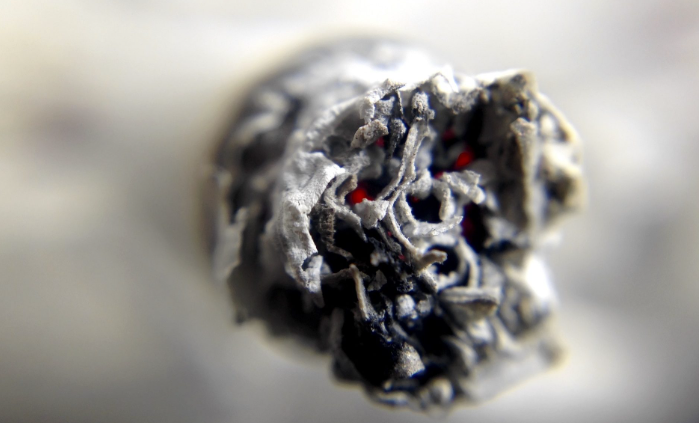Dispelling the Myth That Cannabis and Tobacco Smoke are Equally Hazardous To Health
August 20, 2023
It is misleading at best and disingenuous at worst to imply that cannabis smoke exposure is either equal to or more hazardous to health than tobacco smoking.”
By Paul Armentano, NORML
A growing percentage of Americans perceive smoking cannabis to be less dangerous than smoking tobacco cigarettes. They’re correct, but you wouldn’t know it from reading the recent slew of media headlines.

“Many Americans wrongly believe exposure to marijuana smoke is safer than tobacco,” screamed CNN. Coverage of the survey data in Everyday Health warned, “People Underestimate the Health Risks of Smoking Marijuana.” Syndicated coverage of the study by US News and World Report similarly lamented, “More Americans Than Ever Believe Marijuana Smoke is Safer Than Cigarette Smoke. They’re Wrong.”
In fact, it’s the news media that’s in error.
Numerous studies assessing the long-term health impacts of cannabis smoke exposure belie the myth that marijuana is associated with the same sort of well established, adverse respiratory hazards as tobacco.
For example, federally funded research performed by scientists at the University of California, Los Angeles compared the lifetime risk of lung cancer among more than 2,000 long-term marijuana smokers, tobacco smokers, and non-smokers. Investigators determined that those who regularly smoked cigarettes possessed a 20-fold higher lung cancer risk than did non-smokers. By contrast, those who only smoked marijuana possessed no such elevated risk.
“We hypothesized that there would be a positive association between marijuana use and lung cancer, and that the association would be more positive with heavier use,” the study’s lead author explained. “What we found instead was no association at all, and even a suggestion of some protective effect.”
Another longitudinal study, led by researchers at the Colorado School of Public Health, assessed the relationship between lifetime marijuana use and respiratory function in a cohort of 2,300 subjects ages 40 to 80. The study’s authors concluded: “Current and former marijuana smokers had significantly higher FEV1 (forced expiratory volume) when compared to never users… Both current and former marijuana use was associated with significantly less quantitative emphysema when compared to never users… In agreement with other published studies, we also did not find that marijuana use was associated with more obstructive lung disease.”
More recently, a team of health experts writing in May in the journal Chronic Obstructive Pulmonary Diseases reported that neither former nor current cannabis smoking was associated with evidence of COPD progression or its development. They concluded, “In [this] cohort of ever-tobacco smokers of ≥20 pack-years with established COPD or at risk of developing COPD followed over an average of more than four years, a history of current and/or former smoking of marijuana of any cumulative lifetime amount was not found to be associated with a significantly deleterious impact on progression of COPD.”
Other studies indicate that cannabis smoke and tobacco smoke are not equally carcinogenic and that subjects who exclusively smoke cannabis possess a reduced level of exposure to harmful toxicants and carcinogens than do those who smoke tobacco cigarettes. Some researchers have also theorized that cannabinoids’ anti-cancer activities may offset some of the harms otherwise associated with inhaling combustive smoke.
According to longitudinal study data published last year in the American Journal of Respiratory and Critical Care Medicine, “[I]t is increasingly clear that cannabis has different effects on lung function [as compared] to tobacco and the effects of widespread cannabis use will not necessarily mirror the harms caused by tobacco smoking.”
A separate review paper, published in November by a team of researchers affiliated with the University of Arkansas, is even more blunt. “The data on marijuana contrast starkly with the consistent demonstration of injury from tobacco, the greatest legalized killer in the world today,” they concluded. “Any possible toxicity of marijuana pales in comparison.”
This is not to say that cannabis smoke exposure is altogether innocuous. Cannabis smoke does share some of the same toxins and particulates that are found in tobacco smoke, and some studies have linked marijuana smoking to temporary increases in sputum production and wheezing, as well as an increased risk of bronchitis. That said, exposure to combustive toxins can be significantly reduced by the use of a vaporizer device which activates cannabinoids but does not heat them to the point of combustion. In laboratory studies, herbal cannabis vaporizers have been determined to be an “effective and apparently safe vehicle for THC delivery…[that] do not result in exposure to combustion gases.”
In short, it is misleading at best and disingenuous at worst to imply that cannabis smoke exposure is either equal to or more hazardous to health than tobacco smoking, or to imply that long-term data on its respiratory effects do not exist. They do and the findings of these studies are clear and consistent. The risks associated with cannabis smoke and tobacco smoke are far from equal and the public should not be chastised for rightfully acknowledging their differences.
Paul Armentano is the Deputy Director of NORML, the National Organization for the Reform of Marijuana Laws, and he is the author of several books on cannabis and cannabis policy.
Marijuana Moment is made possible with support from readers. If you rely on our cannabis advocacy journalism to stay informed, please consider a monthly Patreon pledge.
Search
RECENT PRESS RELEASES
Related Post




